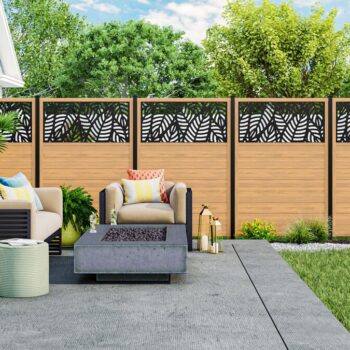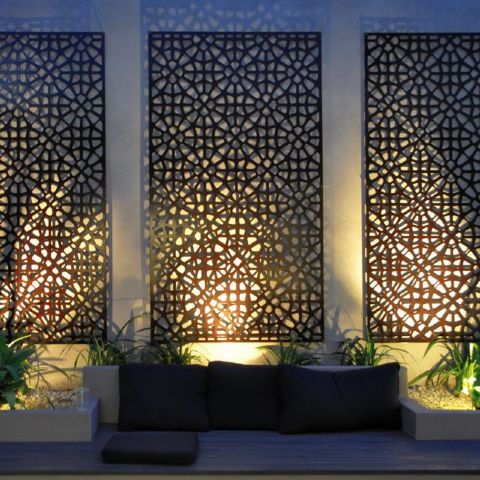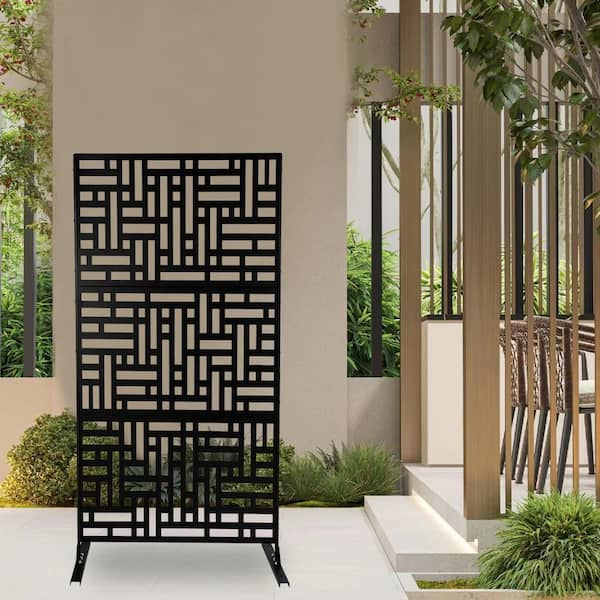When it comes to adding charm and seclusion to your outdoor or indoor spaces, decorative and privacy screens offer the perfect blend of aesthetics and functionality. After years of working in home decor and landscaping, I can confidently share the myriad ways these screens can transform your environment. This article will delve into everything you need to know about decorative and privacy screens, their materials, designs, benefits, and even a handy comparison table to guide your purchase decisions.
Understanding Decorative and Privacy Screens
Decorative screens are not just about separating spaces; they also enhance the visual appeal of your environment. Privacy screens, on the other hand, serve the critical purpose of blocking unwanted views while adding character to a setting.
What Are Decorative Screens?
Decorative screens are aesthetically designed barriers made from various materials, aimed at enhancing the beauty of a space. They can be used indoors or outdoors, acting as art pieces while serving functional purposes.

What Are Privacy Screens?
Privacy screens are designed to shield areas from outside view and provide a level of security. They’re ideal for creating secluded spaces in gardens, patios, or even within homes.

Benefits of Decorative and Privacy Screens
Enhanced Aesthetic Appeal
One of the prime benefits of using decorative and privacy screens is the instant uplift in visual appeal they offer. Whether it’s a modern geometric pattern or a rustic wooden design, screens can complement any decor style.

Increased Privacy
Privacy screens provide a significant boost in seclusion, creating personal havens away from prying eyes—essential for homes in urban areas or shared spaces.
Protection from Elements
Many screens also provide a degree of protection from wind, rain, and sun, making outdoor spaces more comfortable and usable.

Versatile Applications
Decorative and privacy screens can be used in various settings—including gardens, patios, balconies, and even indoor spaces like living rooms or offices.
Materials Used for Decorative and Privacy Screens

The materials used in these screens significantly impact their durability, appearance, and maintenance needs. Let’s explore some common materials:
Wood
Wood is a classic choice for screens, offering a warm, natural look. It can be treated for durability against weather elements.

Metal
Metal screens are robust and come in various finishes. They can add a modern touch and are often used in contemporary designs.
Plastic and Vinyl
These materials are lightweight, weather-resistant, and available in many colors and styles. They usually require less maintenance compared to wood or metal.

Fabric
Used generally in indoor settings, fabric screens can be used to create soft partitions. They are easy to move and can be designed in countless patterns and colors.
Designs of Decorative and Privacy Screens
With a range of designs available, it can be challenging to choose the right one for your space. Here are popular design styles:
Geometric Patterns
These screens feature contemporary shapes and lines, perfect for modern homes.
Nature-Inspired Designs
These often incorporate floral or leaf patterns, ideal for garden settings.
Classic Designs
Traditional motifs are timeless and can suit various architectural styles.
Custom Designs
Many companies offer bespoke designs tailored to your specific needs, allowing for a truly unique screen.
Comparison Table of Popular Decorative and Privacy Screens
| Material | Durability | Maintenance | Cost | Design Versatility |
|---|---|---|---|---|
| Wood | Moderate | Requires treatment and regular care | Moderate to High | High |
| Metal | High | Low | Moderate to High | High |
| Plastic/Vinyl | Moderate | Very low | Low to Moderate | High |
| Fabric | Low | Moderate | Low | Very High |
This table serves as a quick guide to help you compare the most popular screen materials based on various factors critical to your decision-making process.
Pros and Cons of Decorative and Privacy Screens
Pros
- Aesthetic enhancement of spaces
- Increased privacy and seclusion
- Versatile designs to suit any decor
- Protection from weather elements
- Variety in materials to choose from
Cons
- Some materials may require regular maintenance (e.g., wood)
- Initial installation costs can be high
- Limited privacy depending on screen design and material
- Potential for weather damage if materials are not suitable
Personal Experience with Decorative and Privacy Screens
In my experience, the right decorative or privacy screen can genuinely transform a mundane area into a serene retreat. When I installed a wooden lattice privacy screen on my patio, it made an enormous difference. Not only did it provide the seclusion I sought, but it also created a beautiful backdrop for climbing plants, enhancing the overall ambiance of my outdoor space.
How to Choose the Right Screen for Your Space
Choosing the right decorative or privacy screen involves evaluating your specific needs and preferences. Here are some factors to consider:
Space Size and Layout
Evaluate the area where you plan to install the screen. Larger spaces may benefit from taller or wider screens, while smaller areas might work better with compact designs.
Purpose of the Screen
Understand whether you primarily need aesthetic enhancement, privacy, or protection from elements, as this will guide your choice of material and design.
Budget
Setting a budget can help narrow down your options. Consider not only the initial purchase cost but also the potential for maintenance and installation expenses.
Style and Decor
Choose a design that complements your existing decor. Whether you prefer a modern, rustic, or traditional aesthetic, there are options available to suit every style.
Installation Tips for Decorative and Privacy Screens
Installing decorative or privacy screens can often be a DIY project, but proper planning is essential. Here are some tips:
Gather Necessary Tools
Ensure you have all tools and materials required for installation, including screws, anchors, a level, and a measuring tape.
Plan the Layout
Before installation, mark out where you want the screen to go. This will help visualize the space and determine if adjustments are needed.
Follow Manufacturer Instructions
Each screen may come with specific installation guidelines, so be sure to follow them closely for best results.
Consider Hiring a Professional
If you’re unsure about the installation or the screen is particularly large or complex, it might be wise to hire a professional.
FAQs about Decorative and Privacy Screens
How much do decorative and privacy screens cost?
Prices can range dramatically based on material, size, and complexity of design. On average, you can expect to pay anywhere from $50 to over $500 for high-end options.
Are decorative and privacy screens easy to maintain?
Maintenance varies widely by material. For example, wood screens typically require regular treatment to withstand the elements, while metal and plastic options tend to require much less upkeep.
Can I customize my decorative screen design?
Many manufacturers offer customizable options, allowing you to select colors, patterns, and dimensions that fit your specific needs.
Where can I use decorative and privacy screens?
These screens are versatile and can be used in various settings including gardens, patios, balconies, and even as room dividers in interior spaces.
Do I need a permit to install a privacy screen?
Installation permits can depend on local regulations and the height or type of screen being installed. It’s advisable to check with your local council before proceeding.
Conclusion
Decorative and privacy screens offer a wonderful way to enhance your living spaces, adding beauty and utility at the same time. Having explored their designs, materials, benefits, and maintenance tips, you are now equipped to choose the right screen for your needs. Whether you’re looking to create a secluded garden oasis or simply want to add a touch of elegance to your home, the right screen will transform your space into something special. Happy decorating!